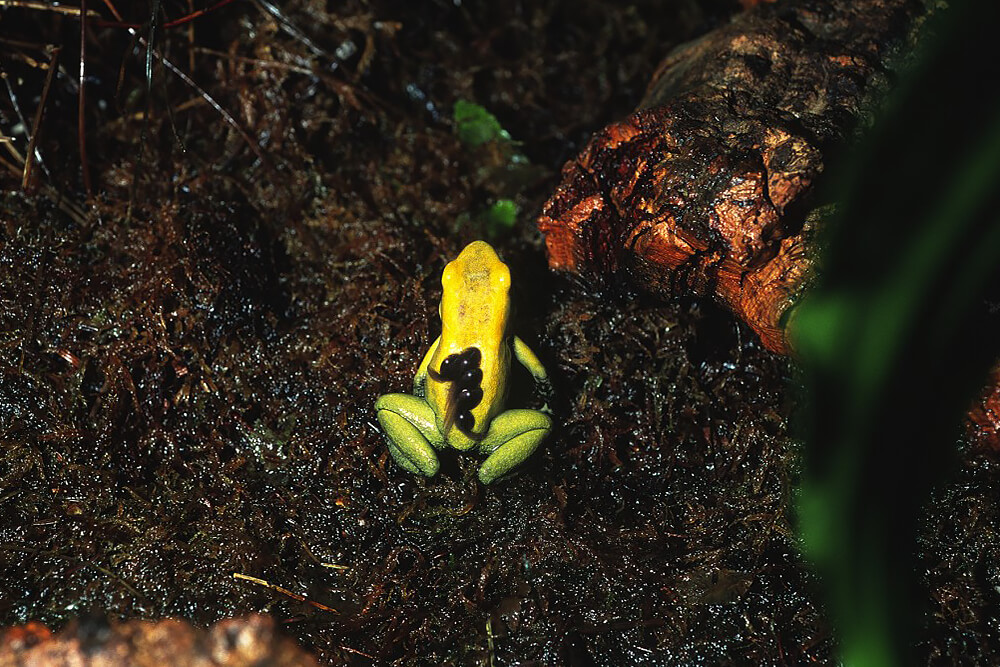Do Young Frogs Hang Out in Their Mothers Backs
Most frogs are nocturnal, but poison frogs are active during the day, when their jewel-colored bodies can best be seen and avoided. The frogs are very social and often stay in pairs or small groups. Males wrestle over territories, females tussle over the best egg-laying sites, and courting pairs nudge and caress one another with their chins and forearms. Things are seldom dull in the poison frog world!
Breeding time begins with poison frogs wrestling with one another, often flipping over an opponent. The winner may secure a territory or a mate, and the females are the most competitive. Courtship, which begins with the male calling and the couple chasing, hopping on, and stroking each other, can last for hours.
Female poison frogs lay small clutches of eggs, from 1 to 30 on average. They usually deposit them in a quiet, dark, moist environment, such as in the base of a bromeliad leaf, the crook in a tree branch, or a small hole in a tree trunk. Both parents help keep the eggs moist and free from fungal growth and predators such as ants.

Poison frogs are also unique among amphibians because they are very involved parents and contribute a lot of energy to caring for their eggs and offspring. For example, frogs in theColostethus genus lay their eggs on the forest floor or on the edge of a leaf. The father guards the eggs until they hatch. The hatchlings, called tadpoles, wriggle out of their gelatin cases onto the father or mother's back. The parents carry their tadpoles to a water source, such as a pond or bromeliad.
Females of other species often return to their tadpoles to lay unfertilized eggs that serve as a food source for the growing youngsters. Other poison frog species lay their eggs directly in water but continue to look after the eggs and tadpoles. And some, like the blue poison frog, tend to eat their siblings as tadpoles, so the parents must find a different water source for each individual hatchling.
The young poison frogs do not look like their parents. As they develop, they change in body shape, diet, and lifestyle, a process all frogs go through called metamorphosis. The young hatch out of their egg as a tadpole with gills to breathe underwater and a tail for swimming. At this point they do not have the poisonous toxins in their skin and so are vulnerable to predators such as snakes and fish. As they get older, they develop lungs, rear legs, and a different mouth.
At about eight weeks, front legs begin to form, and the rear legs continue to develop. Their eyes also change position, and during the 10th week, that tail is absorbed and the color pattern appears. At this point, the tadpole has gradually changed into an adult frog, which spends most of its time hopping on land rather than swimming like a fish in water. Poison frogs are usually mature at about a year and can live 8 to 15 years, depending on the species.
Do Young Frogs Hang Out in Their Mothers Backs
Source: https://animals.sandiegozoo.org/animals/poison-frog
0 Response to "Do Young Frogs Hang Out in Their Mothers Backs"
Enregistrer un commentaire